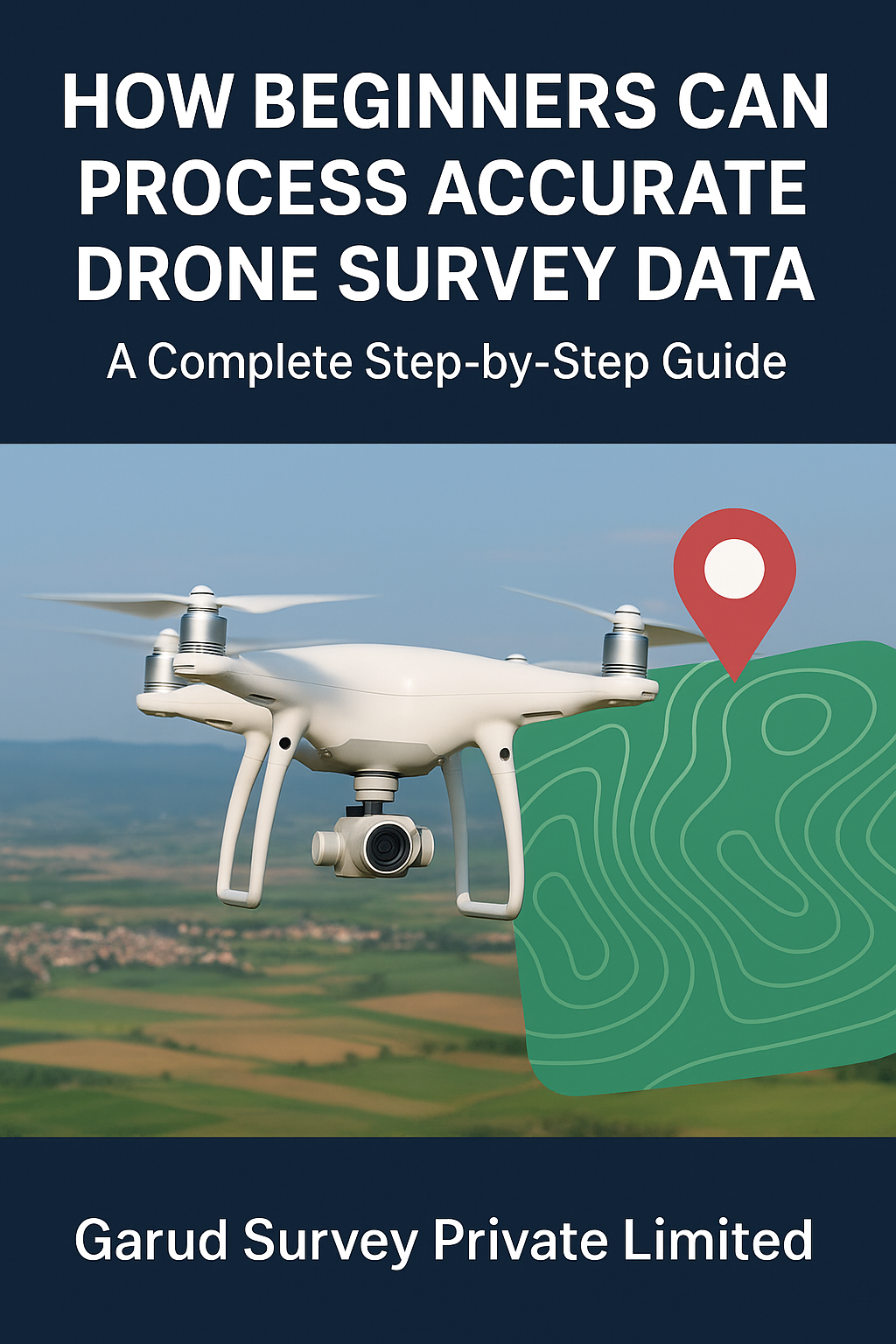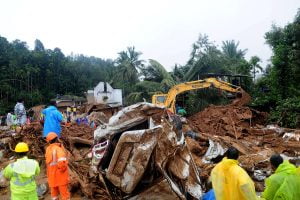Drone surveying has transformed how industries collect, analyze, and interpret land and aerial data. From construction and mining to agriculture and smart city planning, drone surveys provide fast, accurate, and cost-effective insights. But for beginners, one major challenge remains: how to properly process drone survey data and ensure accuracy.
In this guide, Garud Survey Private Limited explains a clear, easy-to-follow, step-by-step workflow for beginners to process drone survey data with precision and confidence.
1. Plan Your Drone Survey Properly
Accurate data collection begins with effective planning. Before flying:
✔ Define the purpose of the survey
Is it for mapping, topographic data, inspection, volume measurement, or monitoring? Your target outcome determines the settings and flight plan.
✔ Select the right drone and payload
Choose a drone with the right sensors—RGB, LiDAR, multispectral, or thermal—based on your requirement.
✔ Ensure proper GCP setup
Ground Control Points (GCPs) significantly improve accuracy. Place them at strategic, clearly visible locations and measure coordinates using DGPS/RTK tools.
✔ Plan flight parameters
Overlap: 70% front, 60% side
Altitude: Depends on required GSD (Ground Sampling Distance)
Speed: Adjust based on wind and camera type
Well-planned surveys help minimize errors during the processing stage.
2. Collect High-Quality Drone Imagery
During the flight, make sure:
✔ Lighting is consistent
Avoid harsh shadows and strong sunlight when possible. Early morning or late afternoon flights are ideal.
✔ The sky is clear
Wind, fog, and rain can distort images and cause stitching errors.
✔ Camera settings are optimized
Use proper exposure, ISO, and shutter speed. Avoid motion blur.
✔ Maintain consistent flight path
Use automated flight planning apps to ensure uniform overlap.
High-quality raw data always leads to accurate results.
3. Organize and Inspect the Captured Data
Before processing, review your data:
✔ Remove blurred or unusable images
Bad images can cause errors in stitching and modeling.
✔ Rename and structure files
Create folders for images, GCP data, flight logs, and notes.
✔ Cross-check GCP coordinates
Make sure your GCP data aligns with field measurements.
This step saves you time when the software starts processing.
4. Import Data Into Processing Software
Use industry-standard photogrammetry software like:
Pix4D
Agisoft Metashape
DroneDeploy
Bentley ContextCapture
Steps to follow:
Create a new project
Upload images
Import GCP coordinates
Define output settings (DSM, DTM, orthomosaic, point cloud)
This software will automatically detect tie points and align the images.
5. Align and Georeference the Images
This is the core of drone data processing.
✔ Image Alignment
The software identifies common points in overlapping images and generates a sparse point cloud.
✔ GCP Marking
Mark GCPs manually on images where required for improved accuracy.
✔ Accuracy Check
Review residual errors—lower values mean better accuracy.
Garud Survey Private Limited strongly recommends beginners double-check the GCP marks for the best results.
6. Generate 3D Models, Orthomosaics, and Elevation Maps
Once alignment and georeferencing are complete, the software produces:
✔ Dense Point Clouds
A detailed 3D representation of the area.
✔ DSM (Digital Surface Model)
Shows elevation including buildings and trees.
✔ DTM (Digital Terrain Model)
Represents the bare ground surface.
✔ Orthomosaic Images
High-resolution stitched images that are true to scale.
✔ Contour Maps
Useful for planning and engineering works.
These outputs form the core deliverables for clients and engineers.
7. Analyze and Interpret Results
After generating the outputs, interpret them based on your project goals:
✔ Calculate volumes for mining and stockpile measurements
✔ Measure distances and areas for planning
✔ Monitor progress in construction
✔ Detect defects in infrastructure
✔ Study flood-prone zones using elevation models
Make sure to export data in formats like .LAS, .TIFF, .OBJ, .DXF, etc. depending on the requirements.
8. Quality Control and Error Checking
Beginner surveyors often skip this important step.
✔ Check RMSE (Root Mean Square Error)
Lower RMSE = higher accuracy.
✔ Compare field measurements vs. drone outputs
Ensure results match on-ground reality.
✔ Identify distortions
Look for warping, blurred spots, or stitching breaks.
This ensures your final output is reliable and professional.
9. Export and Deliver Final Drone Survey Outputs
Export your data in the required formats and organize it properly:
Orthomosaic (.tiff)
Contours (.dxf)
3D Models (.obj/.fbx)
Point Clouds (.las)
Reports (PDF)
Prepare a clean report summarizing key findings for your client.
Final Thoughts
Processing accurate drone survey data may seem challenging for beginners, but with the right workflow and tools, you can achieve professional-quality results. At Garud Survey Private Limited, we specialize in advanced drone surveying, mapping, and data processing across India. Whether you need high-accuracy land surveys, industrial inspection, or LiDAR mapping, our experienced team ensures precision, safety, and timely delivery.
If you want help with drone data processing or need a professional survey, Garud Survey Private Limited is always here to support you.



